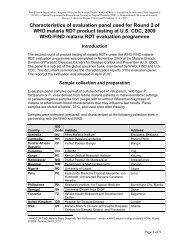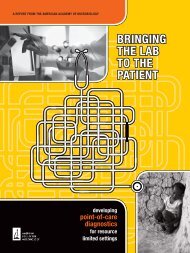Round 1 - Foundation for Innovative New Diagnostics
Round 1 - Foundation for Innovative New Diagnostics
Round 1 - Foundation for Innovative New Diagnostics
Create successful ePaper yourself
Turn your PDF publications into a flip-book with our unique Google optimized e-Paper software.
8.3. Band intensity<br />
All positive tests results were recorded according to the<br />
band intensity against a standard reference chart, matched<br />
closely to line colour. Based on Reader 1 results, the<br />
distribution of band intensity results is presented as the<br />
mean band intensity of positive results. In addition, the<br />
intensity was expressed <strong>for</strong> each possible result (0, 1, 2, 3<br />
or 4) 18 as the percentage recorded at that level.<br />
8.4. Lot agreement<br />
Disagreement between test lots is calculated from the<br />
number of samples that returned a positive result on both<br />
RDTs tested in that lot against parasite-positive samples<br />
at 200 parasites/μl, and on the single RDT from each lot<br />
tested against samples at 2000 or 5000 parasites/μl. Thus,<br />
high inter-lot agreement indicates consistency in detecting<br />
malaria parasites.<br />
18 A standard intensity comparison chart is used, allowing matching to the<br />
closest of 4 common colour variants of labelled antibodies used on RDTs,<br />
each at 4 levels of intensity.<br />
8.5. Reader variability<br />
Two readings of each test are conducted, although only the<br />
first is certain to comply with the manufacturer’s guidelines<br />
<strong>for</strong> reading test results. A second reading is per<strong>for</strong>med within<br />
one hour. Detection rates <strong>for</strong> both readers are calculated to<br />
assess how sensitive the results are to the time of reading.<br />
8.6. Invalid tests<br />
The total number of tests that were deemed invalid during<br />
testing of both lots, using samples at 200 parasites/μl and<br />
2000 or 5000 parasites/μl.<br />
8.7. Heat (thermal) stability<br />
The results of heat stability testing are reported as the<br />
number of positive tests (maximum 10) and mean band<br />
intensity (<strong>for</strong> positive tests only) per lot at baseline and<br />
after lots were stored at 4°C, 35°C and 45°C <strong>for</strong> 2 months<br />
against one P. falciparum parasite sample at 200 and 2000<br />
parasites/μl.<br />
9. Laboratory versus<br />
field-based malaria<br />
RDT evaluations<br />
Despite the strengths of the product testing programme,<br />
the evaluation is not completely analogous to field testing<br />
of malaria RDTs. In order to compose a panel that could<br />
be reproducibly used to evaluate RDTs, blood samples were<br />
diluted, frozen and stored below −70°C. Blood that has<br />
undergone a freeze thaw process may not have exactly the<br />
same characteristics as fresh blood, but as red cell lysis<br />
occurs as a first step on RDTs, the effect of this is limited.<br />
A further variation from field equivalence is the use of a<br />
micro-pipette to supply blood to the RDT device rather than<br />
the blood transfer device provided by the manufacturer.<br />
This was necessary because blood is collected from a cryotube<br />
rather than a finger-prick. This technique also ensured<br />
consistency of testing by reducing the likelihood of operator<br />
error.<br />
Malaria Rapid Diagnostic Test Per<strong>for</strong>mance – Results of WHO product testing of malaria RDTs: <strong>Round</strong> 1 (2008)<br />
13


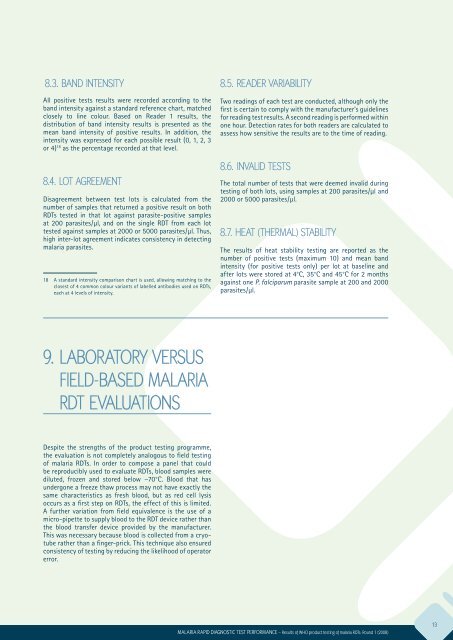

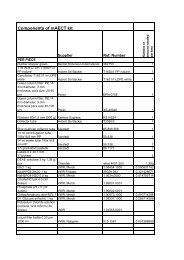
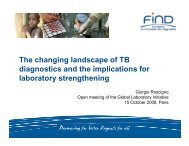
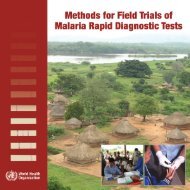
![Download in English [pdf 2Mb] - Foundation for Innovative New ...](https://img.yumpu.com/49580359/1/184x260/download-in-english-pdf-2mb-foundation-for-innovative-new-.jpg?quality=85)

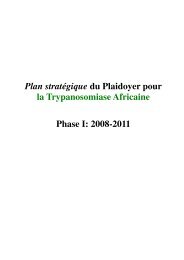
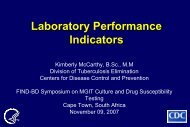
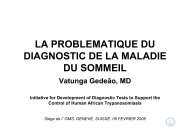
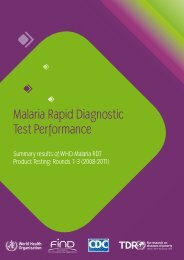
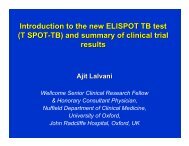
![New laboratory diagnostic tools for tuberculosis control [.pdf]](https://img.yumpu.com/43339906/1/190x135/new-laboratory-diagnostic-tools-for-tuberculosis-control-pdf.jpg?quality=85)
